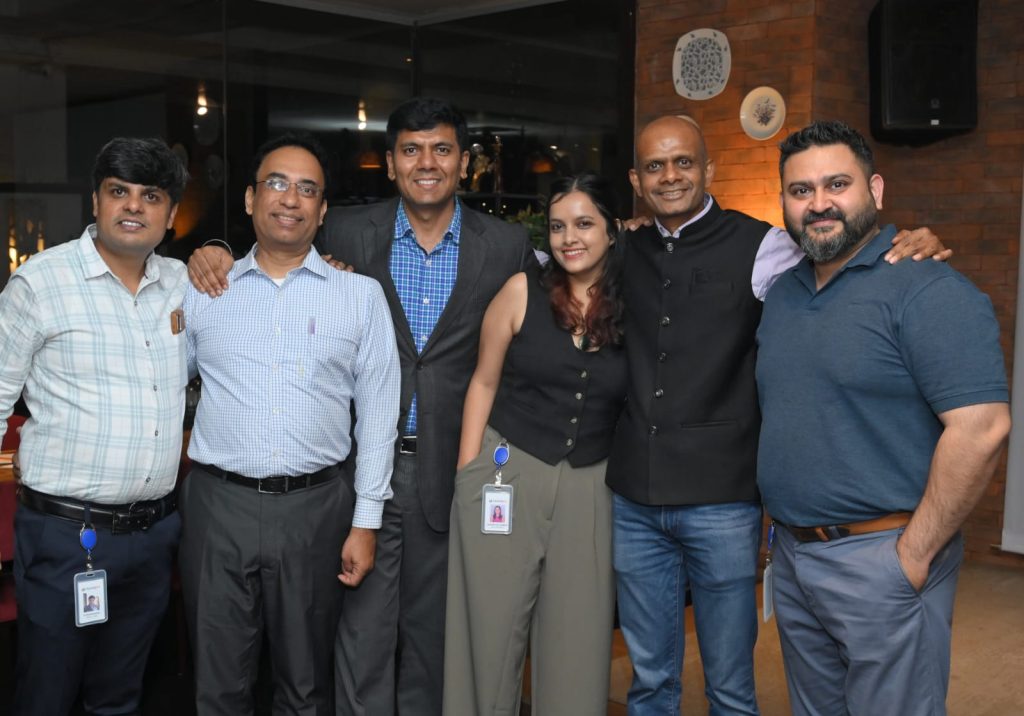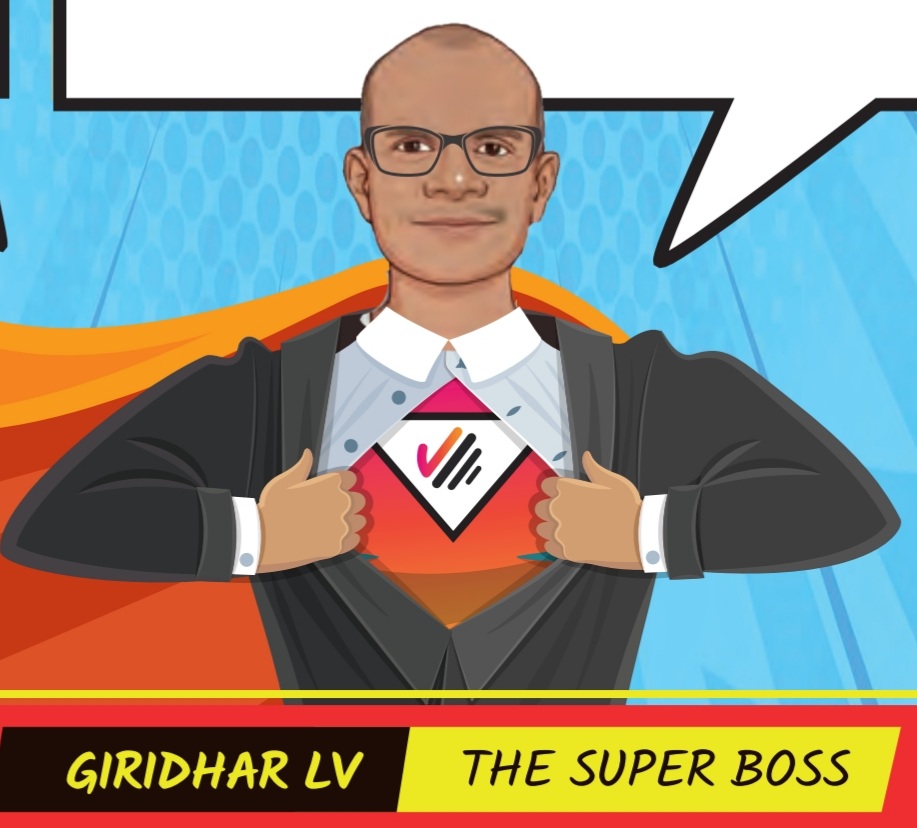This seemed like the hardest write-up for me to put through. It felt like a mountain I wasn’t sure I could climb. But then, I started listening to my recording with Giridhar the other day, and suddenly it seemed like the easiest thing to do. There’s a rhythm that flows through the words when you’re talking about someone you interact with every single hour. You know, it’s interesting—when you join a company, it might seem like the company chooses you, but truthfully, you choose the people you work with too. The manager who will help shape your journey—they become part of your story just as much as you are part of theirs. The date is etched in my memory: April 12th, 2022. He interviewed me. April 14th, the moment of realization came that I had the job. And by April 18th, I was stepping into the doors of a new beginning. It was that swift, that transformative. As simply as I can put it, had it not been for him, this entire Nuvepro chapter would not have unfolded for me as I chose him as my manager too.
How do I even begin to describe this person, who is, without a doubt, the finest human we all have ever come across? Every single thing he says, it’s —accurate, correct, and thoughtful, always ticking the boxes. No seriously, it’s uncanny! If Giridhar was a part of the Mahabharata, I am certain he would be Yudhishthir—emblematic of Satya, saral, and always steadfast in what is right. Sometimes, it’s like he’s our encyclopedia. Lol.

Long before any of us had heard of Nuvepro Technologies or seen his leadership in action, he, like a man of responsibility, and discipline had already flourished in his own ways.
“I don’t think my upbringing was anything extraordinary,” he tells me with a quiet humility that is so quintessentially Giridhar at work. “It was simple, rooted in the idea of hard work and good values.“ Raised alongside his brother, just a year apart, Giridhar’s family was one where work and values intertwined. His father worked at HMT, and his mother began her career once the boys were old enough. These were the days when life seemed uncomplicated, and joy was found in the smallest of things.
What I found most striking in Giridhar’s childhood was the carefree days of playing with friends, so foreign for today’s times! “We had a big group of friends around my age—some a year younger, some older. We’d play every day, and that continued until about 10th standard,” he recalls fondly. He tells me that despite the progression of time, the strongest memories he carries with him are of those one to one-and-a-half hours of play. The simplicity of that joy was the grounding force that led him to navigate the complexity of life in the years that followed.
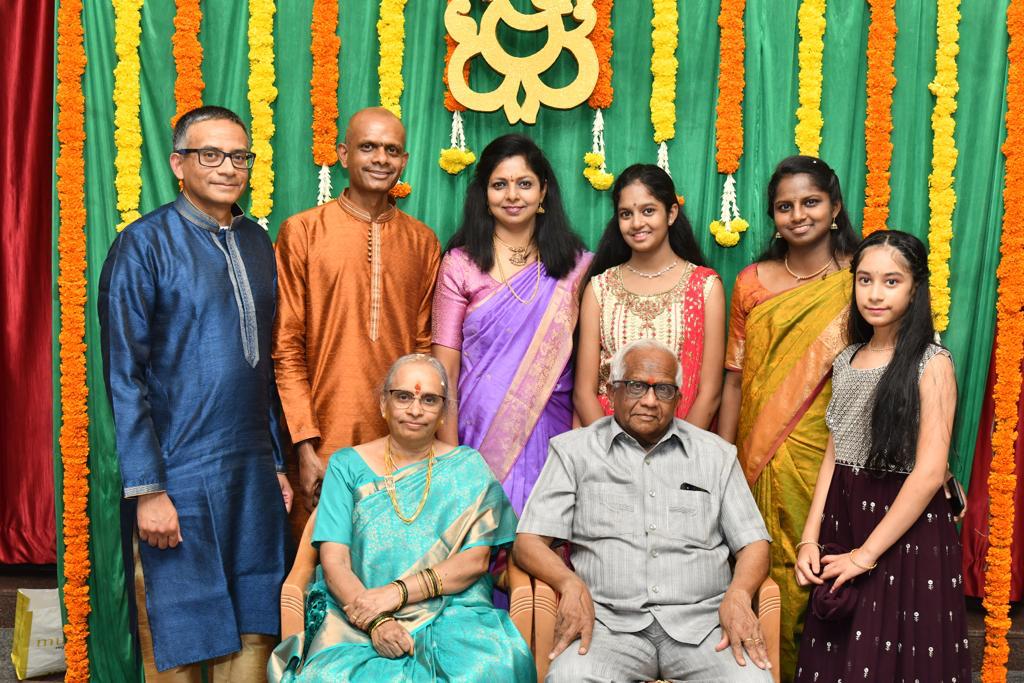
The school was just a stone’s throw away, no more than 5-10 minutes from home, and that proximity gave him the freedom to truly experience childhood in a way that many of us might wish we could return to. His days were defined by laughter, schoolwork, and the protective embrace of his grandmother, who played an irreplaceable role in his formative years. While technology and screens hadn’t yet penetrated his world, the true heart of his upbringing lay in human connection, play, and learning.
But what truly stands out in Giridhar’s recollection of his childhood is the lack of external pressure. “There was no great expectation from our parents to top the class or achieve extraordinary academic feats,” he recalls.
Initially attending a school near his home, he moved to RT Nagar in his 6th standard, a newly developing locality that would be the backdrop for much of his early teenage years. His father worked at HMT and had received an allotment in HMT Layout, further cementing the family’s place in the growing city.
Education, for Giridhar, was always more about exploration than pressure. He explains, “My family didn’t push us toward any particular career.” The decision to pursue engineering seemed a natural progression. The influence of the ICSE syllabus, with its practical approach to learning, especially in the sciences, contributed to his burgeoning curiosity. “In ICSE, we had separate papers for Physics, Chemistry, and Biology, and the practicals were hands-on—we dissected cockroaches, frogs, and fish,” he tells us, a tone of nostalgia mixing with amusement.
Despite not facing overwhelming academic pressure, Giridhar still remembers the significant impact of those early years. “I could have done better,” he admits, reflecting on the time when he wasn’t as studious as he might have been. “But that’s how it was—I was studying, but it was not like I had to get into IIT or anything.” His approach to education was more about absorbing what was around him, learning what piqued his interest, and letting the future unfold.
What didn’t surprise me was that Giridhar had two offers—one from Kirloskar and the other from L&T. He ultimately chose L&T, a decision that would shape much of his professional journey.
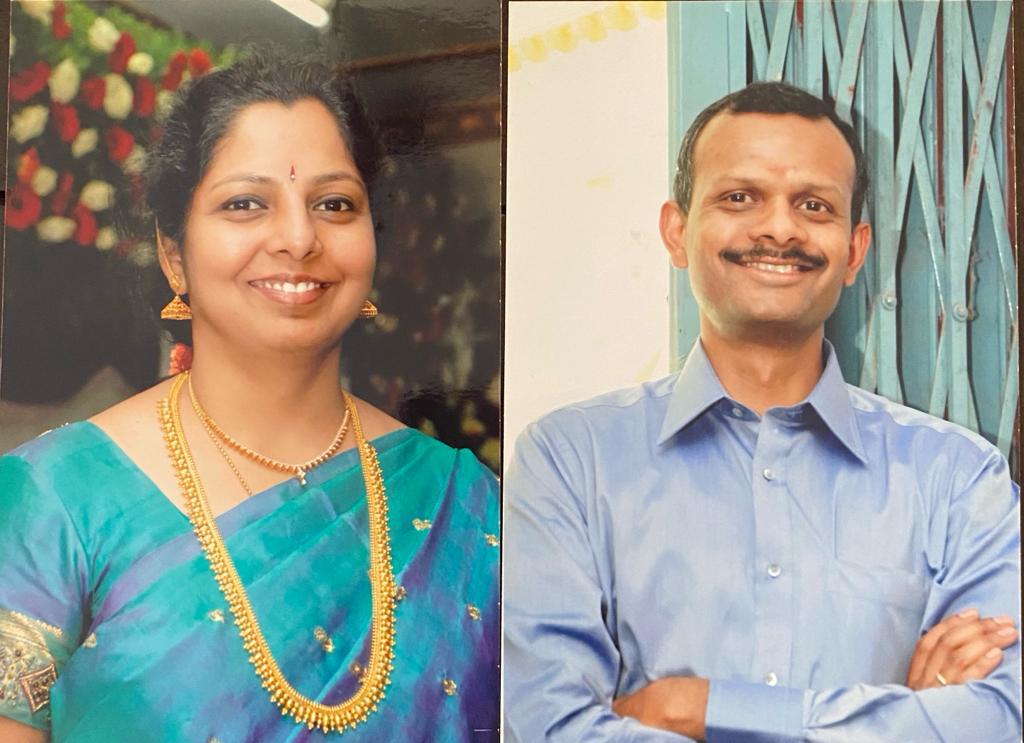
At L&T, he was part of a pioneering effort in the medical electronics industry, a position that sent him to Mysore for a few years, where he worked on developing medical devices like ECG monitors and pulse oximeters. Despite the technical challenges, it was a period of significant learning, and it marked the beginning of Giridhar’s deeper involvement in the tech world. But it was also a time when the winds of change were beginning to blow stronger. Giridhar had always harbored a desire for further studies abroad, but financial constraints held him back. “Even now, it’s something I sometimes think about—maybe I should have taken that risk,”
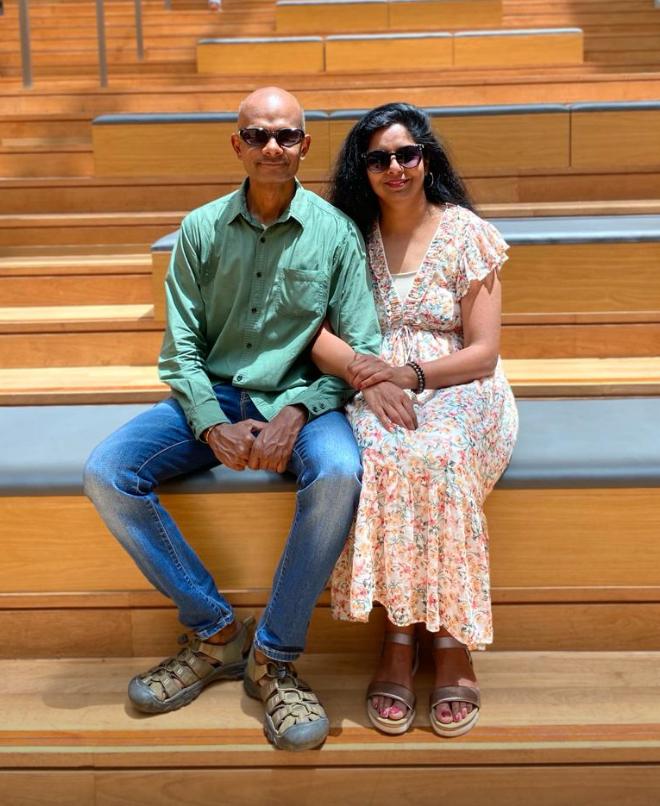
After his time at L&T, Giridhar transitioned to Novell, a company that later became Micro Focus after several acquisitions. Working at Novell from 1997 to 2000, he was part of a global capability center (GCC) in Bangalore, a center handling work that wasn’t being done in the U.S. or was outsourced to India. The transition to Novell marked a turning point in his career, introducing him to a much larger scale of operations. He remembers the experience fondly:
One of the most memorable experiences at Novell was a trip to the U.S. for scalability testing. “The lab in Provo, Utah, was huge—filled with racks and racks of computers. We were able to remotely launch scripts to test scalability before releasing the software. The scale at which things operated left a lasting impression on me,” he says, recalling the vastness and complexity of global tech operations.
The story takes a turn as Giridhar ventures into uncharted territory. Following Novell, Giridhar joined Mindtree in 2000. Back then, Mindtree was still small, and his employee number was 306. It was a place where he thrived, working on various service projects. While working at Mindtree, where he was promoted quickly, he began to sense that something was missing.
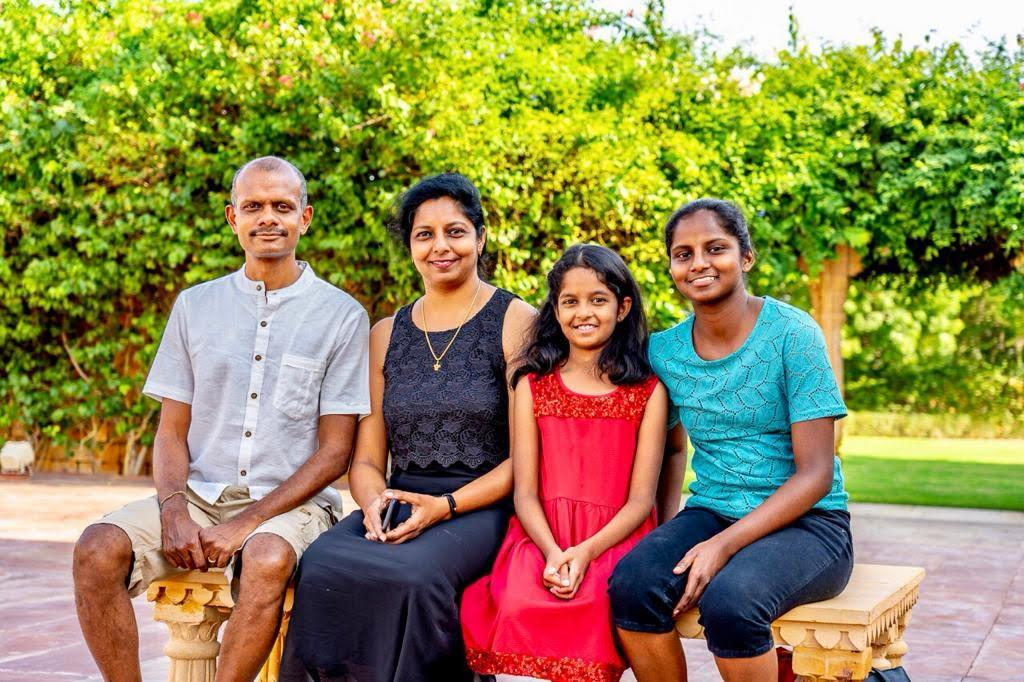
There was a yearning for hands-on work that had faded into the background of his corporate life. That’s when the opportunity for VMunify presented itself. “It wasn’t glamorous at all,” he admits with a chuckle. “Just a positive mindset and the belief that it could work.” With unwavering support from his wife Rachana, Giridhar took the plunge. The first years of the venture were a roller coaster, filled with uncertainty and risk, but also with immense potential.

Rachana Ma’am, his life partner, has been a pillar of strength. While she did not fully understand every technical detail of his work, considering her work profile is majorly into Company Secretary, her belief in him never wavered, he tells us. Even during the lean years, when Giridhar wasn’t drawing a salary, she continued her work to support the family. Her unwavering support, combined with his own belief in their vision, became the backbone of his entrepreneurial journey. “I never really had a conversation with my parents where they questioned my decision to leave my job, Of course, Rachana had questions, and rightly so, and I think I did not even answer those with clarity, but there was trust. There was faith,” he recalls.

I was asking Giridhar how becoming a father changed him. He reflected: “I think the activity level thing was there from the beginning. It didn’t change after fatherhood. My focus has always been making sure my kids are healthy and doing well in school. I mean, that’s the standard for every parent, right? We were really firm about getting her into sports, and even though family members were supportive, I always felt that such decisions need to come primarily from the father. You can keep telling your kids to study hard, but if you’re sitting there watching TV, they’ll know exactly what to do. They will follow what they see, not just what they hear.” I guess I realized that makes him so hands-on as a father and for girls, there’s no bigger joy honestly than spending time with the father. It just comes naturally to us.

What warmed my heart as I woke up this morning to many messages from Giridhar’s family members for him. The best thing was, that I had asked Rachana Ma’am and Namya but they made an effort to get his entire family – it was so beautiful, and rather than me putting it out, I am gonna quote it all for you as it is.
Rachana Giridhar, ( Giridhar’s wife): “Hi All, I am Rachana, Giridhar’s wife. My journey with Giridhar started 25 years ago and coincidently we celebrated our 25th Anniversary this year in May. Ours was an arranged marriage and I am a Company Secretary and CPA from the US working in corporate. Our elder daughter Namya, whom some of you know is a software engineer and works for Google, India. Our younger daughter Pranitha is in Grade 9 and an avid Bharatanatyam dancer. I still remember the day very clearly when Giridhar was super excited that their idea got selected in Mindtree and would start working on it. That was the beginning of his entrepreneurial journey and Nuvepro Technologies Private Limited was incorporated 10 years ago. As a spouse, I had mixed emotions, excitement about the potential of success but also anxiety about the risks involved and it has been a roller coaster ride. Giridhar is an optimist, extremely focused, and hardworking. He is very passionate about his work and an avid runner and fitness enthusiast. He exercises daily and runs during the weekends (all of you probably already know this!). He always makes it a point to spend quality time with kids. “Congratulations on your Nuvepro and team a very Happy 10th anniversary and reaching this amazing milestone! Wishing you many more years of growth, success, and happiness!”
Giridhar’s parents, Resp. Viswanatha Setty and Resp. Gayathri Ma’am ( I am melting while reading this :): “ I am happy to know that Nuvepro’s 10th Anniversary where in My Son Giridhar’s Journey who initiated for starting Company with Co-founders. My Son Giridhar has been very active since childhood. He stood First in the class from the beginning of his Engineering Degree. He started his Career in a Mysore Software Company and joined Mindtree in Bangalore. His work was appreciated by top Management who encouraged Him to start his Own Software Company. He informed Me that He wanted to start His Own Software Company and I was Very Happy to know and encouraged Him. Then He started His Own Company Nuvepro with a few of His Friends from Mindtree. I am to inform that his initiation and with his Co-founders is doing Very Well by sharing Software to Indian Companies and Foreign Countries. We are proud of Our Son Giridhar. I am happy to inform you that Now Nuvepro Software Company started by Him with His Colleagues is Celebrating its 10th Anniversary. WE WISH HIM AND HIS COLLEAGUES A HAPPY HEALTHY AND LAUGHING CELEBRATION OF THE 10TH, ANNIVERSARY OF NUVEPRO’S SOFTWARE COMPANY, FROM DADDY AND MUMMY. 🌷👌🌻👌🌺👌🌼’’
Giridhar’s mother-in-law, Resp Sudha Ma’am: ” My wishes to Giridhar on the 10th anniversary and to his entire Nuvepro team.“
Giridhar’s Younger brother, Shri. Shashidhar: “I am proud of Giri for building an awesome team and company, and laying the path for success and growth. You truly inspire us all. Wish you and Nuvepro the very best.”
Namya LG ( Giridhar’s elder daughter and ex-colleague): “It was in school when you started at Nuvepro. I vaguely remember missing my 6th standard long jump heats on the day of the office opening. At that point, if you had probably told me I would work at the office in the next few years, I would have got angrier 😂 As time passed I understood more about Nuvepro and it was fascinating. While I had only heard you present demos to clients at home, it was only once I started interning did I understand the big picture and what it meant to “sell” to a customer. Quoting a paragraph from the blog I had penned summarizing my internship; I consider it a privilege to say I worked at my dad’s office —
The routine of going to the office every day or rather every other day is something I will truly cherish. Exercise in the morning (been a cult freak for the past few months), get ready for the day, and go to the metro station with my dad. A 20-minute metro ride; get off at RV road and walk for a kilometer. We usually have lunch together, and tea in the evening. Leave the office by 7:30–8:00 PM, occasionally eat something on the way back, and discuss the happenings at the office; this is on repeat. It is inspiring how you can balance a lot of things; always taking part in the race category of a higher mileage than I do 😜, and ensuring to spend enough time with all of us at home irrespective of how your day was. Wishing you many more customers and races (I will catch up soon here 😜)”
Pranitha LG ( Giridhar’s younger daughter): “Papa, you are dedicated, supportive, systematic, knowledgeable with a great sense of humor, an orator, and an amazing artist! The way you do things is inspiring. And the main thing: Happy 10th birthday to Nuvepro!! You’re also an amazing teacher with a unique and creative approach to things. I want to become confident and curious like you! All the very best to Papa and the team, may all of you reach greater heights.”
Giridhar’s Niece, Suravi – “Thank you Peddaya for always inspiring and encouraging me.”
Thank you, Giridhar. As I close this in 2500 words, I feel content to be chosen to write about you. I will remember this for a long time. You shall remain a guru to many and me. As to what we don’t like about you- when you are always correct, it’s a hidden joke that we giggle about. Sometimes I feel maybe you predict the future. 😛 Your wisdom and insight are unmatched, and maybe you can see Kundali too or do palm reading, it’s almost as if you have a sixth sense for seeing what lies ahead. I wonder what Rachana Ma’am, Namya, and Pranitha feel about your correctness. We all have our quirks, but you are a walking encyclopedia of certainty and that’s what makes you our favorite. And, yes, let’s make those Project Readiness 25 happen!
Oh yes, and Moyukh has a special message for you. “Tell Giridhar it’s been ten years to my laptop too!”
Authored by Shivpriya R. Sumbha | Editorial Reviewer – Anisha K Sreenivasan
